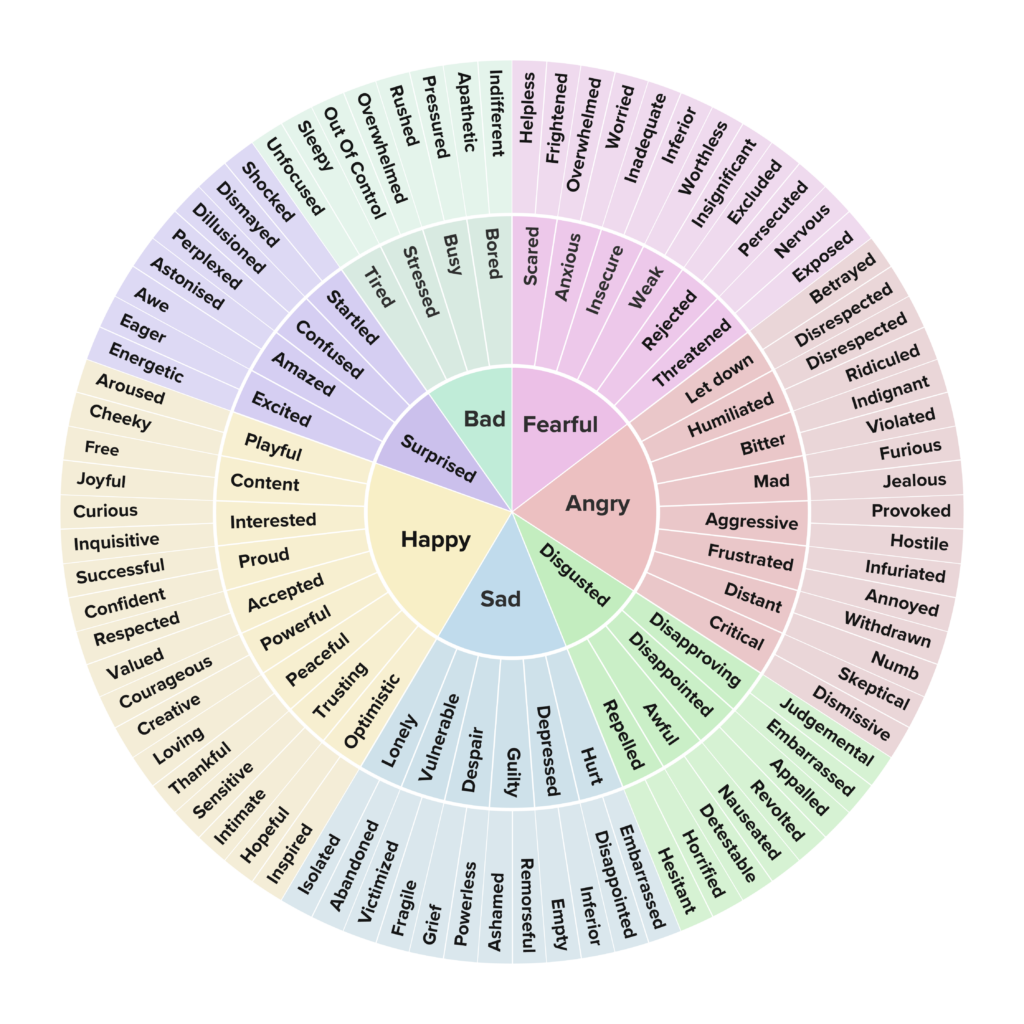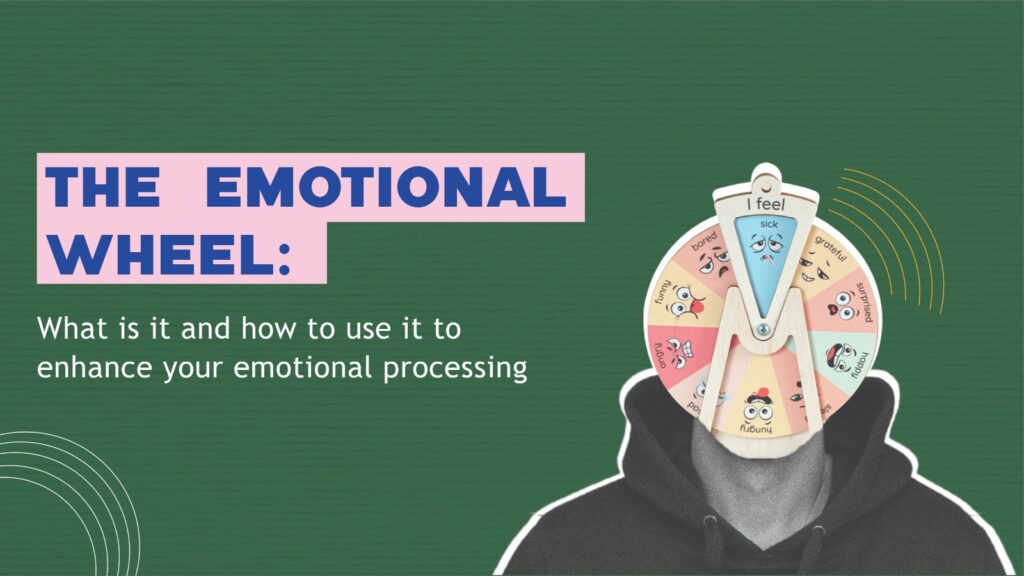What is an Emotion Wheel?
Imagine a google maps for your emotions that helps you identify where you are so you can begin your journey to where you want to be. That’s the emotion wheel! It contains primary emotions at the center that are subsequently divided into more specific emotions as we move outward from the center. It can be used to help identify what emotions you’re feeling at a particular moment.

How can you use an Emotion Wheel?
Start by closing your eyes and focusing on whatever you’re feeling. Feel it, visualize it, Locate it. You may ask yourself questions like:
- Where am I feeling this emotion? (different emotions show up differently in our body)
- What do I feel like doing? (behaviors can be good indicators of emotions)
Next bring out the feeling wheel and look at the center. Using the process of elimination, and your well-honed intuition discover the raw emotion you’re feeling. It’s okay if you’re not sure, and it could be multiple emotions simultaneously! With this primary emotion move outwards. Choose the options that feel the most accurate as you go and you’ll have a more refined understanding of your feelings! You can even use it the other way around and start with specific emotions from the outside and use it to find the primary emotion you’re feeling! It may feel a little clunky at the beginning which is perfectly normal. With repeated use the entire process will become helpfully natural.
Why do we need to know our emotions?

It’s the same reason we feel motion-sick. Our brains simply haven’t caught up with the times. Our brains are wired for survival, to live no matter what. But, the wiring is fine tuned for primordial times where predators were everywhere and each day was literally a life-death situation. That may be why sometimes our emotions may actually feel like life and death. Situations like work stress, relationship stress, etc may trigger the same responses as defending against a giant carnivorous cat back in the day. The instincts use emotions to survive. According to research literature, these survival instincts that rule our emotions are:
- Protection (need to stay safe)
- Destruction (removing obstacles to goals)
- Incorporation (adding something to life)
- Rejection (getting rid of harmful things)
- Reproduction (wanting more of an experience, making more people)
- Reintegration (grieving & adjusting to the new normal)
- Exploration (investigating the world)
- Orientation (reacting to unfamiliar experiences and getting used to them)
If we know what emotion we’re feeling, we can trace it back to the need/want we want fulfilled. If we don’t know, there is little we can do. We may then simply be at the mercy of the patterns that we’ve learned or internalized. Emotions are our friends, they’re helpful guides, we only need to spend the time getting to know each one, what they need, what triggers them, and how best we can support them when they show up. Easier said than done, but it can still be done! After all, that’s why you’re here.
What to do if you feel no emotions?
There are a lot of ways that emotions are shown in pop culture. There are different conventional ways of imagining different emotions. Like anger erupting like a volcano, or grief bursting forth like a broken dam. The truth however is that we all feel emotions differently, uniquely. When we compare what we see and how we’re “supposed” to feel we may come to the conclusion that “I don’t feel emotions.” Like when we see a photo of someone and can’t recognize them in person. Another case may be that with years of ignoring/repressing our emotions as a coping mechanism, we may learn to become apathetic. In either case, it’s not that we “don’t” feel. It is more that we can’t tell “when” we’re feeling, and “what” the feeling looks like in our unique experience. Recognizing and regulating emotions is a skill. So no matter who you are, or what your experiences have been, you can learn to do it. Some helpful indicators to let you know that you’re experiencing emotions are:
- Identify areas in your body where you sense uneasiness, discomfort, or different than normal. Emotions are always accompanied with physiological markers. Like anger may cause headaches, or anxiety makes uncomfortable sensations in the stomach. Once identified, using the emotion wheel you may decipher which emotion it is.
- Identify what you feel like doing. Emotions make us want to do things, like screaming when angry, or literally hiding when feeling ashamed. These are good cues that indicate you’re experiencing an emotion.
Combine the two and with practice and effort, you will get better at identifying, experiencing and regulating emotions. It is not easy by any means. Leading an entire life without knowing this essential regulatory skill can make breaking the inertia of our current coping mechanisms especially challenging. But it can be done. If your current coping mechanisms were satisfactory, you wouldn’t be reading this blog. We all have the power to change, to improve. We believe in you! And if you want support on this journey, we’re always just a call away!


